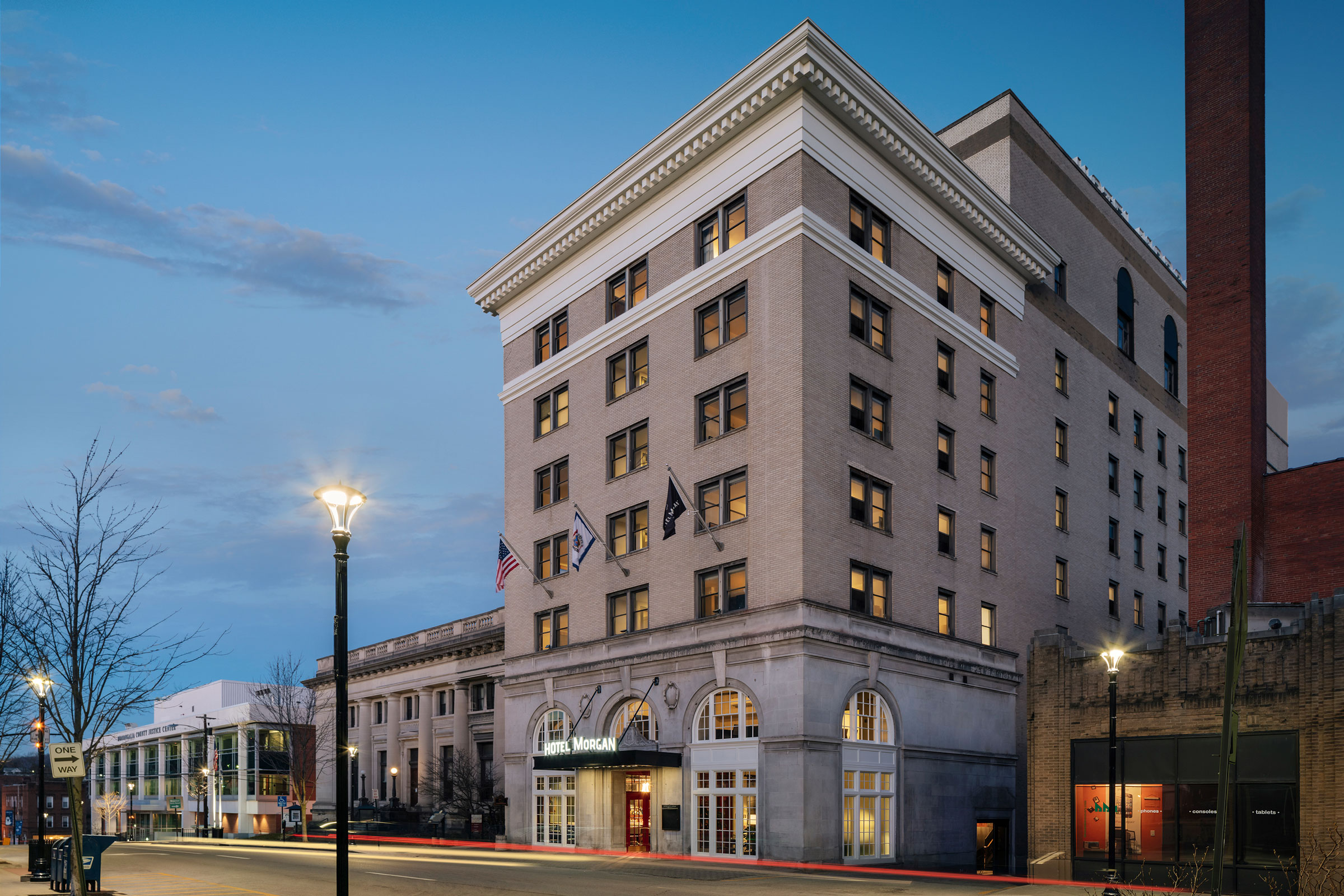Story at a glance:
- Historic preservation architecture looks to protect and preserve buildings that are historically significant.
- Preservation prioritizes the maintenance, reuse, and repair of existing materials and features over the replacement, alteration, or addition of other building elements.
Americans have consciously been preserving historic buildings in some capacity since at least the mid-19th century, but the practice would not become formalized until 1966 when Congress established the National Historic Preservation Act (NHPA).
The NHPA did two very important things: It created the National Register of Historic Places and mandated the active reuse of historic buildings for both public benefit and the preservation of our shared national heritage.
Let’s explore the basics of historic preservation architecture as outlined by the Secretary of the Interior’s “Standards for the Treatment of Historic Properties” and take a look at a few real world examples from the field.
What is Historic Preservation in Architecture?
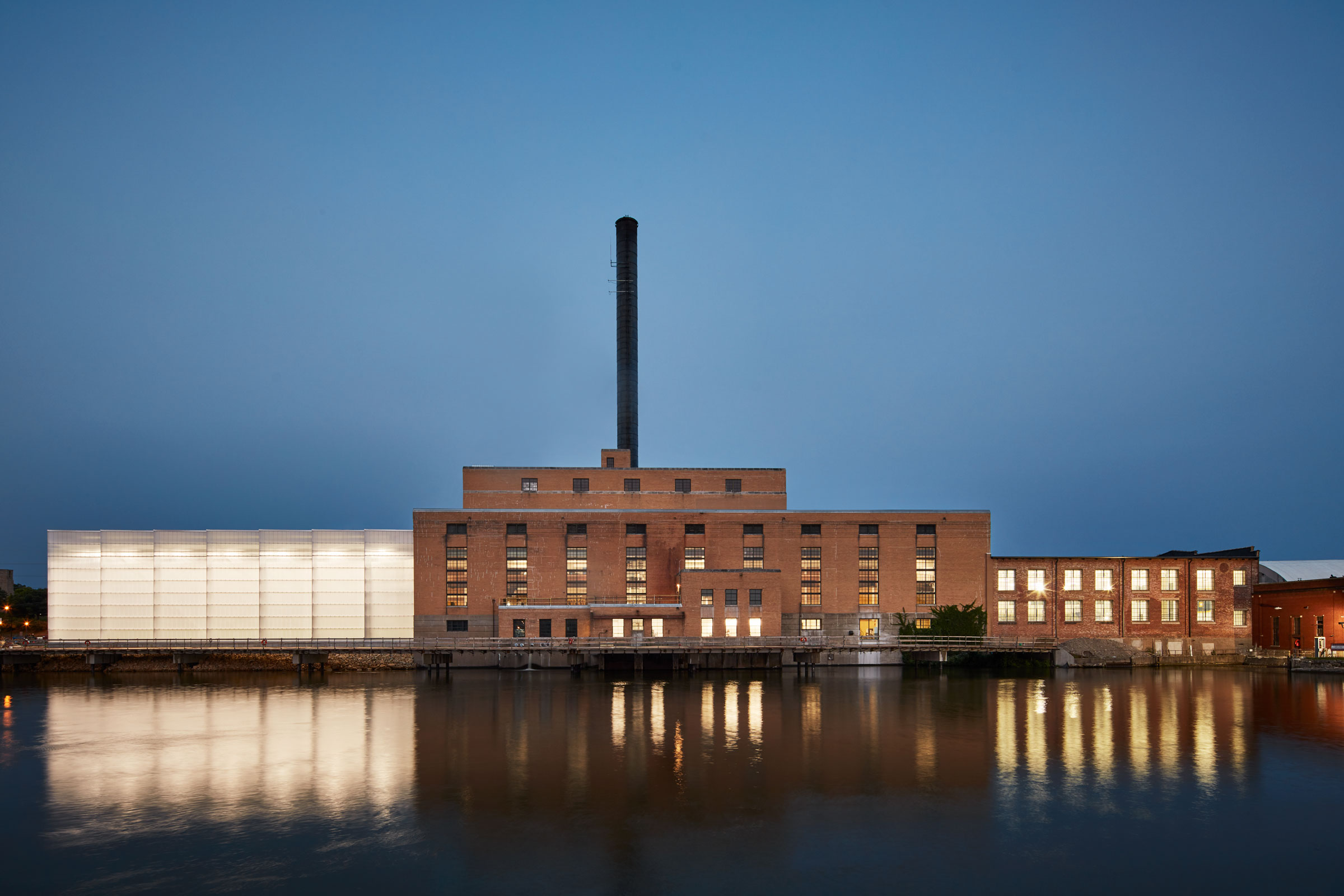
When a college president passed a newly decommissioned power plant, he got an idea: Wouldn’t that space make for a great, much needed new campus fieldhouse? The new facility now has a running track, conference facility, batting cages, café, and more. Photo by Tom Harris
Historic preservation architecture, or built heritage conservation, as it’s also known, is a subset of architecture focused on preserving, protecting, and conserving those buildings and structures with sufficient historical significance. The US Secretary of the Interior’s “Standards for the Treatment of Historic Properties” defines historic preservation as “the act or process of applying measures necessary to sustain the existing form, integrity, and materials of an historic property.”
In most cases historic preservation architecture prioritizes the maintenance, repair, and reuse of a building’s existing features rather than replacing, altering, or otherwise adding to a structure. Exterior additions are not even considered to be within the purview of historic preservation as a treatment. Minor upgrades to a building’s systems, however, are often considered necessary additions: “The limited and sensitive upgrading of mechanical, electrical, and plumbing systems and other code-required work to make properties functional is appropriate within a preservation project.”
In this regard historic preservation is closely linked to the notion of adaptive reuse, or the process by which existing buildings are renovated, refurbished, or otherwise updated to serve a purpose other than that which they were originally designed for. Adaptive reuse is technically not a requirement for historic preservation, but the two often overlap, as it is often possible to adapt the usage of historic buildings without seriously impacting their historic character.
Standards for Preservation
The US Secretary of the Interior identifies eight key standards for the preservation of historic buildings:
1. Properties selected for historic preservation will either be used as they were historically or adapted for a new use that maximizes the retention of original materials, features, spaces, and spatial relationships.
2. Replacement of intact or repairable historic elements or alteration of characterizing features, spaces, and spatial relationships will be avoided wherever possible to retain and preserve the historic character of a property.
3. Historic properties are to be recognized as physical records of their time, place, and use. Any work that is required to stabilize, consolidate, or otherwise conserve existing materials and features should be both visually and physically compatible, but identifiable upon close inspection. All work should be documented for the sake of future research.
4. Past changes, additions, or alterations to a property that have since gained historic significance in their own right will be kept and preserved.
5. The distinctive qualities—e.g. materials, finishes, construction techniques, examples of craftsmanship, et cetera—that characterize a historic property will be preserved.
6. Evaluation of existing historic materials will be conducted to determine the appropriate level of intervention required. Instances of severe deterioration in which the repair or limited replacement of distinctive features is deemed necessary will do so using new materials that match the old in color, texture, design, and composition.
7. Any physical or chemical treatments deemed appropriate and necessary for preservation will be undertaken using the gentlest means possible. If a treatment will cause damage to historic materials it should not be used.
8. Elements of archaeological significance will be protected and preserved in place wherever possible. Mitigation measures will be put in place for those resources that must be disturbed for a valid reason.
These standards for historic preservation heavily prioritize the conservation and protection of existing features deemed historically significant, only making exceptions for circumstances necessitating alteration for the safe and continued use of the building in question.
Why is Historic Preservation Important?
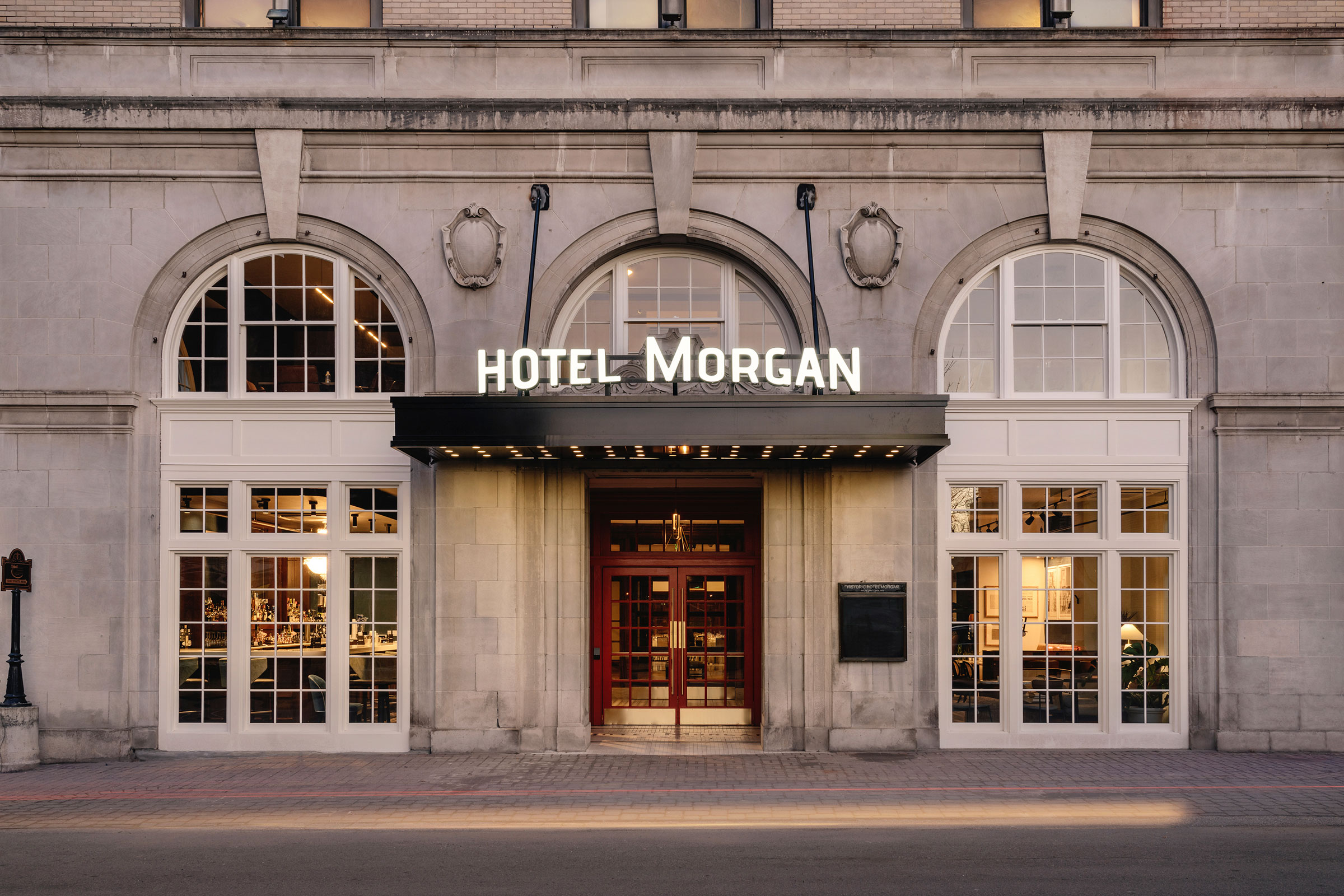
The restored Hotel Morgan dates back to 1925 and was a popular spot for dignitaries. Photo by Chase Daniel
Historic preservation architecture is important because it helps to extend the operational lifespan of historically or culturally significant buildings that would otherwise languish in abandonment or be demolished to make way for new development. Not only does this help protect local histories and add to the historical fabric of an area, it also helps to create an architectural archive of sorts, one that acts as a record of past building techniques and strategies.
“Extending the lifespan of a building preserves examples of construction materials and methods that are being forgotten,” Ellen Tichenor, creative director at Thrash Group, previously told gb&d. “And preservation of urban historic fabric contributes to the cultural identity and quality of life of a place.”
Historic preservation in architecture is also an inherently sustainable practice in that it prolongs the use of existing structures, materials, and other building components, thereby reducing waste and minimizing new resource extraction.
Challenges of Historic Preservation
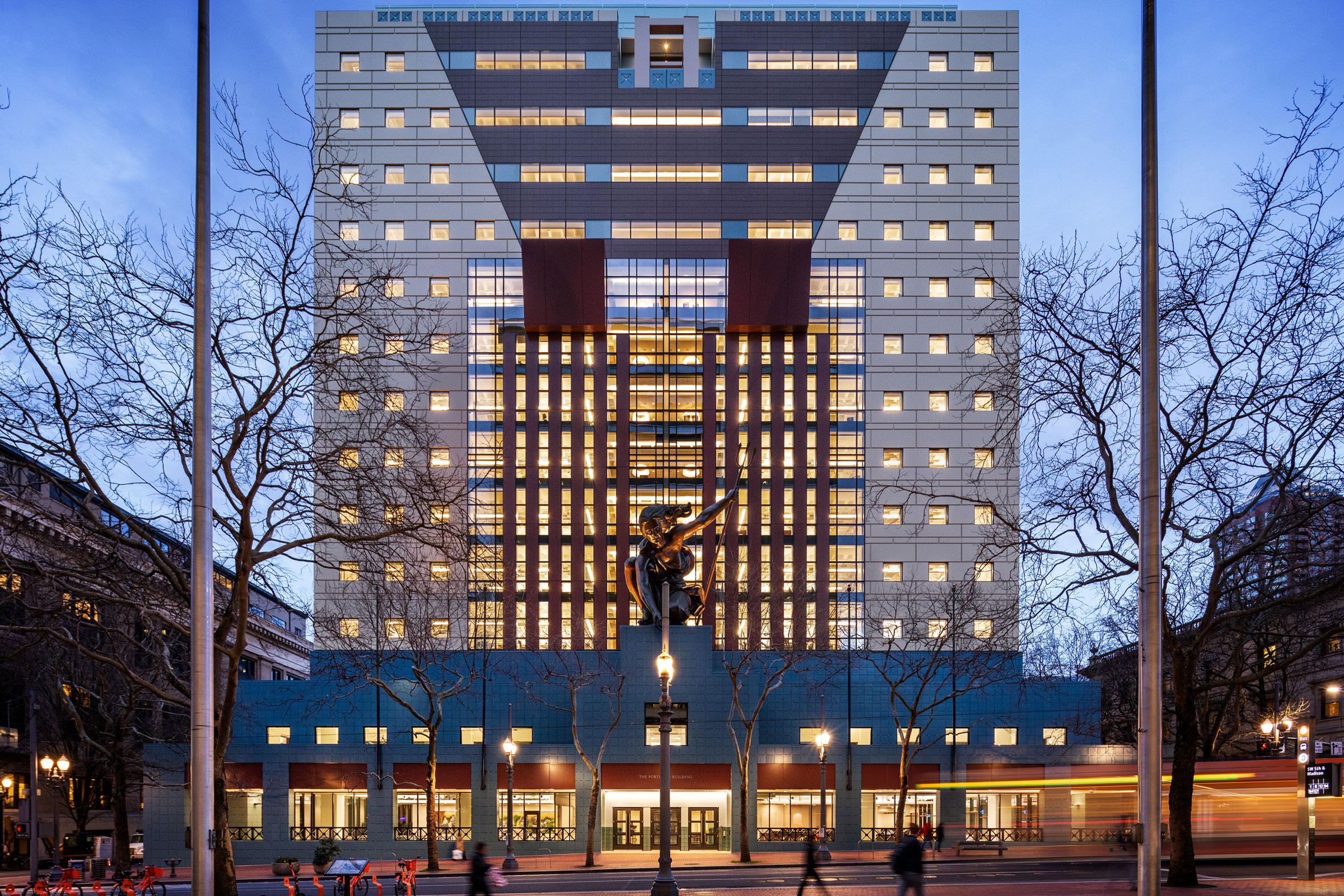
The postmodern Portland Building is one of the city’s icons. In a reconstruction led by DLR Group, a new curtain wall system solves longstanding water leakage issues, while improving thermal performance and increasing access to natural light. Photo by James Ewing/JBSA
Historic preservation is an undeniably noble endeavor, but it isn’t without its challenges. Two of the most significant challenges associated with historic preservation deal with cost and regulations.
Cost Barriers
While it’s true that preserving and retaining existing materials can help reduce project expenses to a certain degree, historic preservation projects can often cost considerably more than new construction. This is because historic buildings require specialized materials, teams of highly skilled professionals and craftsmen, and often come with unforeseen problems that can hold up the process and extend work times. The continued maintenance of historic buildings that have undergone preservation can also be expensive, as specialized care requirements can quickly add up.
Regulatory Hurdles
Complying with building codes and regulations for new construction is often a chore in and of itself, and historic preservation projects are subject to even more stringent regulations than new development. Navigating these regulations can be an extremely time-consuming, difficult process that can be incredibly bureaucratic at times, necessitating communication with a variety of different offices, boards, and agencies.
Historic preservation projects that look to retain a building’s overall character but update its purpose and functionality can also run into zoning issues, especially if the proposed use is multi-functional. Working through all of this regulatory red tape can make historic preservation an off-putting prospect and can even lead to costly project delays.
Principles of Historic Preservation Architecture
A few key principles act as foundational guidelines for the preservation of historic materials, features, and other building components.
Identify & Preserve Historic Features
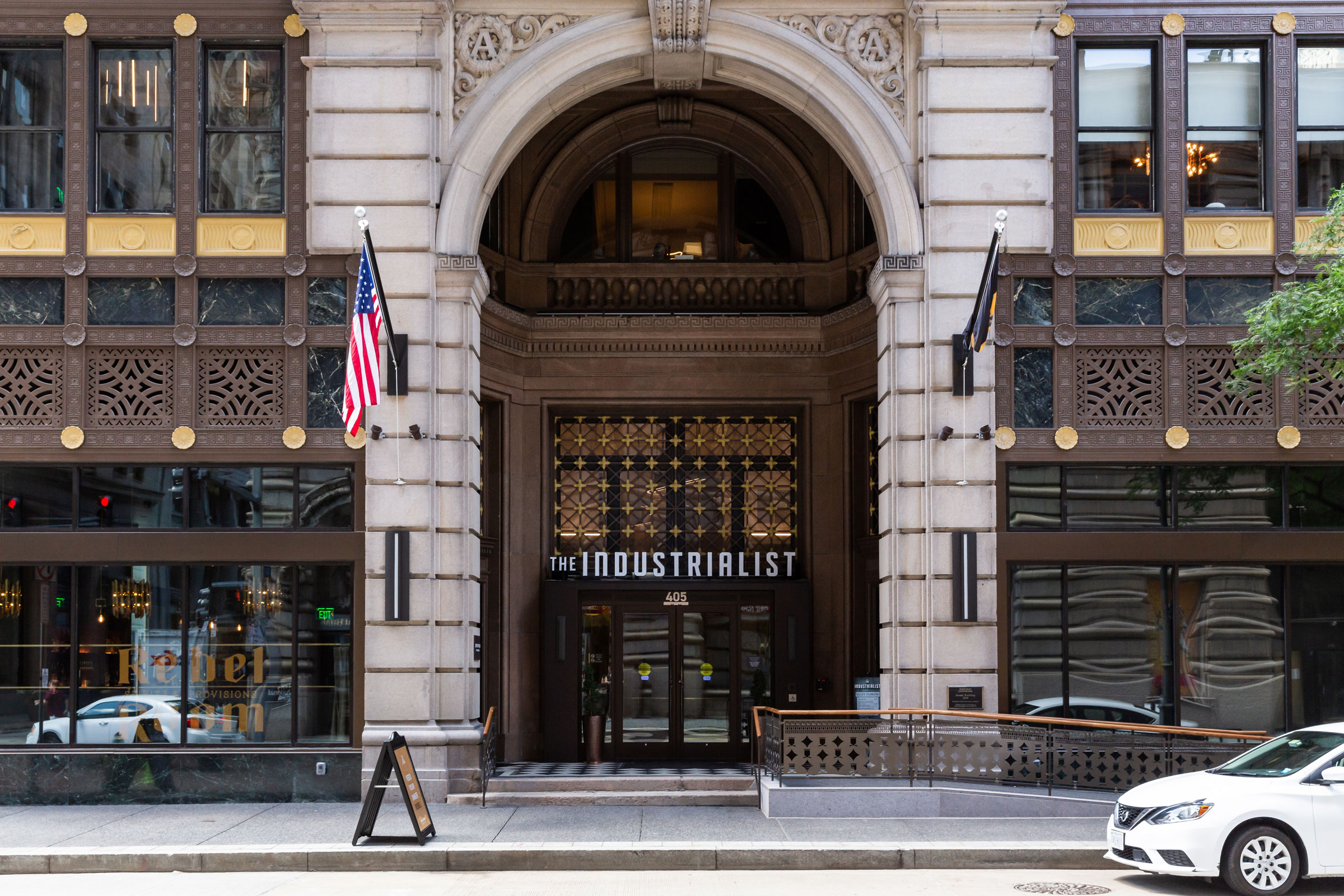
The Industrialist Hotel’s historic facade holds rich architectural details, including a Cornice crown with howling masks and a brick and terra-cotta–striped facade on a granite base. The design team completed significant restoration work at the building’s cornice, repairing and replacing structural steel that had been compromised by water infiltration. Photo by Digital Love Studios
Every historic preservation project begins by carefully identifying those materials, features, and spatial relationships that are considered important to defining a building’s historic character and which must be retained for preservation. The NPS’ Preservation Brief #17 outlines a three-step process for identifying the visual aspects of historic buildings:
Identify the overall visual aspects. The first step in determining a building’s significant historic features simply entails stepping back and identifying prominent physical aspects—e.g. the setting, shape of a building, its roof, roof features, projections, recesses, openings, materials, et cetera—without focusing on the details; the front face of a building is generally the most important in establishing character, but all sides ultimately contribute.
Identify the visual character at close range. This step involves looking at a building from arm’s length in order to see all of a material’s surface qualities (e.g. color, texture) or evidence of age or craftsmanship; these details are especially important to take note of due to the ease of which they may be obscured or damaged by preservation work.
Identify the visual character of the interior spaces, features, and finishes. The final step deals with a building’s interior and necessitates the careful inspection of individual rooms, as well as making notes of the general layout and floor plan, taking care to consider how spaces connect and relate to one another.
This three-step approach is one of the simplest and most effective ways to identify the defining features that ultimately give a building its historic character and determine what aspects need to be preserved.
Stabilize Deteriorated Historic Materials & Features
Before preservation work begins, the Secretary of the Interior recommends that all sufficiently deteriorated portions of a historic building be stabilized as a preliminary protection measure. Stabilizing typically begins with temporary structural reinforcement until further work can be conducted, but may progress to the correction of unsafe conditions or the full weatherization of certain elements to prevent further deterioration.
Depending on the state of a building and its components, stabilizing may not be necessary in all historic preservation projects, but it should always be considered.
Protect & Maintain Historic Features
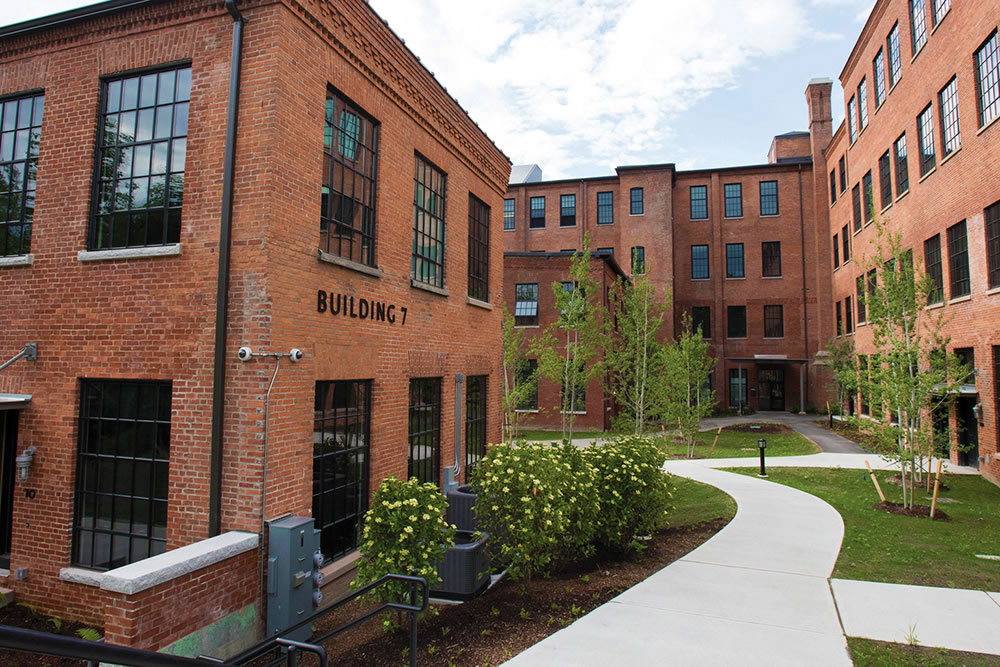
Photo courtesy of Cable Mills
Once important historic materials and defining features have been identified, the protection and maintenance of those characteristics can begin. Protection measures are typically treated as preparatory to other work and ensure that a historic property is protected before and during the preservation process. Ongoing protection that continues after preservation work has been completed is considered maintenance. Both processes should involve the minimal degree of intervention possible.
Protection and maintenance of preserved masonry, for example, might involve making sure that historic drainage features that divert stormwater from masonry surfaces are functioning properly or entail the application of permeable anti-graffiti coatings to masonry walls as a means of protecting them from vandals.
Repair of Historic Materials & Features
If the physical condition of a historic building’s character-defining materials and features necessitates repairs, it is recommended that such repair work be achieved through stabilizing, consolidating, patching, splicing, and conserving wherever possible. Completed repairs should be both physically and visually compatible with the original material.
Damaged stucco, for example, would be repaired by removing the affected portion and patching it with new stucco that matches the old in strength, color, composition, and texture, as opposed to synthetic stucco or an EIFS.
In short, any and all repair work deemed necessary in a historic preservation project should be conducted using the least intensive means possible to avoid damaging or disrupting non-affected portions and preserve the building’s overall historic character.
Limited Replacement in Kind
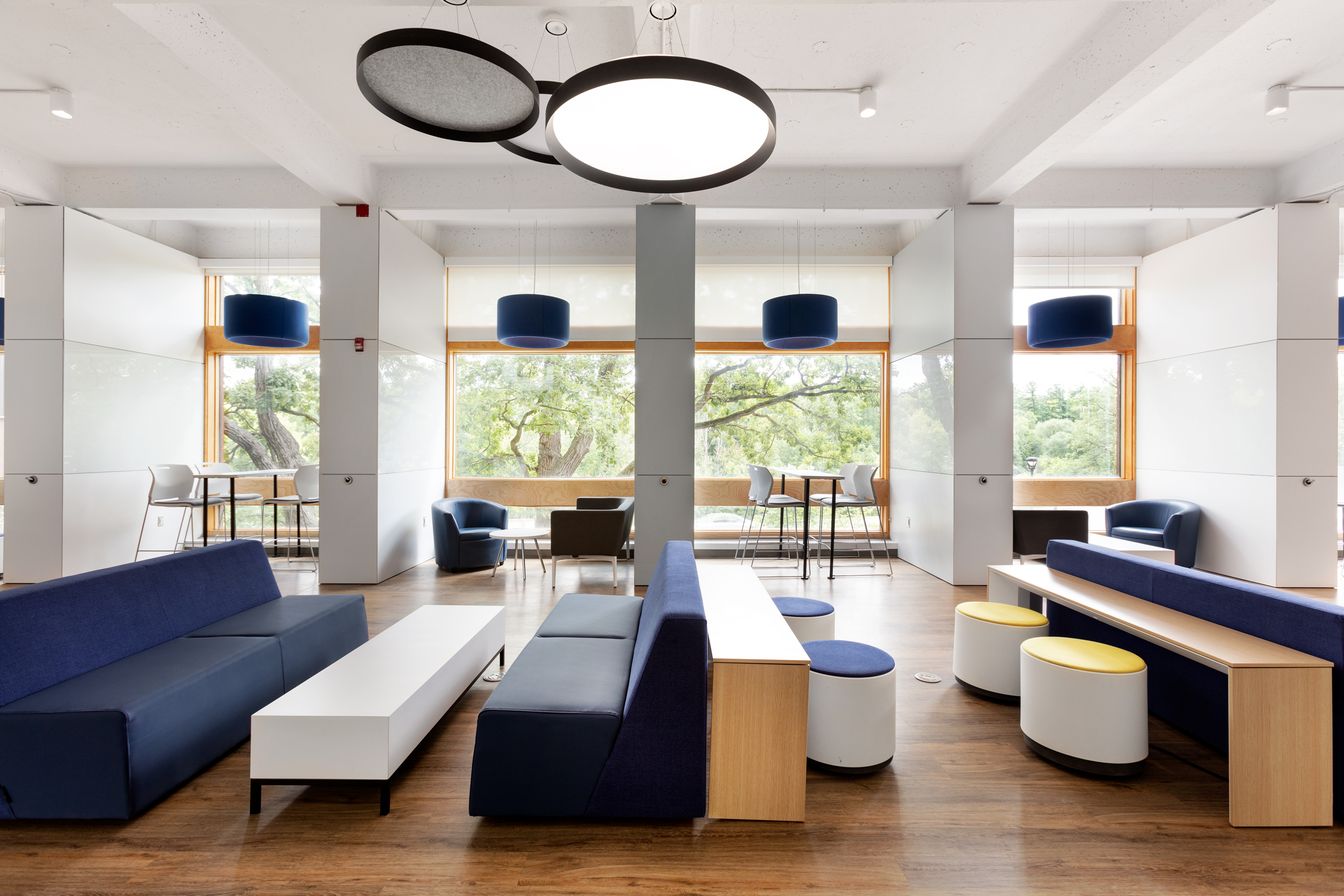
The Carleton University Loeb Building includes a new active student space designed by CSV Architects. Photo by Krista Jahnke Photography
Historic preservationists recognize that the replacement of certain materials, features, and other architectural elements is sometimes necessary. Rather than replace an entire feature or element, however, historic preservation emphasizes the importance of replacing in-kind, or only replacing the damaged portions of a building element.
Replacement in-kind is generally considered to be the greatest degree of intervention recommended by the SOI and should only be undertaken as a last resort if a feature cannot be protected, stabilized, or otherwise repaired. Even then, replacement in-kind is only recommended when surviving prototypes may be referenced or when the replacement may be based off of some sort of documentary or physical evidence (e.g. photographs, illustrations, et cetera).
When CSV Architects undertook the Carleton University Loeb Building preservation project, for example, they had to selectively replace in-kind portions of some of the building’s original wood-framed windows. This was considered a suitable treatment in that they were able to reference surviving, undamaged frames in other parts of the building. Any new material that was introduced was then stained to match the existing frames and trim finishes to maintain a cohesive color palette and historic patina.
If it comes to pass that an extremely prominent feature is entirely missing and there are no prototypes or evidence to reference, it may be more appropriate to consider a different treatment, such as restoration or rehabilitation.
Resilience to Natural Hazards
With climate change increasing both the frequency and severity of extreme weather, it is extremely important for historic preservation projects to adequately prepare and plan for natural disasters. Improving the resiliency of a historic building, however, must be done in a manner that does not severely impact its historic character, according to the SOI’s Standards for the Treatment of Historic Buildings.
“When a treatment is proposed for a building that addresses such potential impacts and will affect the building’s historic character, other feasible alternatives that would require less change should always be considered first. In some instances, a certain degree of impact on a building’s historic character may be necessary to ensure its retention and continued preservation.”
Improving a historic property’s resilience to natural hazards starts with using the most current climate data available and identifying which natural disasters the property is vulnerable to. The next step is to assess how these known hazards might impact character-defining features and begin developing plans to adequately prepare and protect these features against future disasters.
Accessibility Code Work
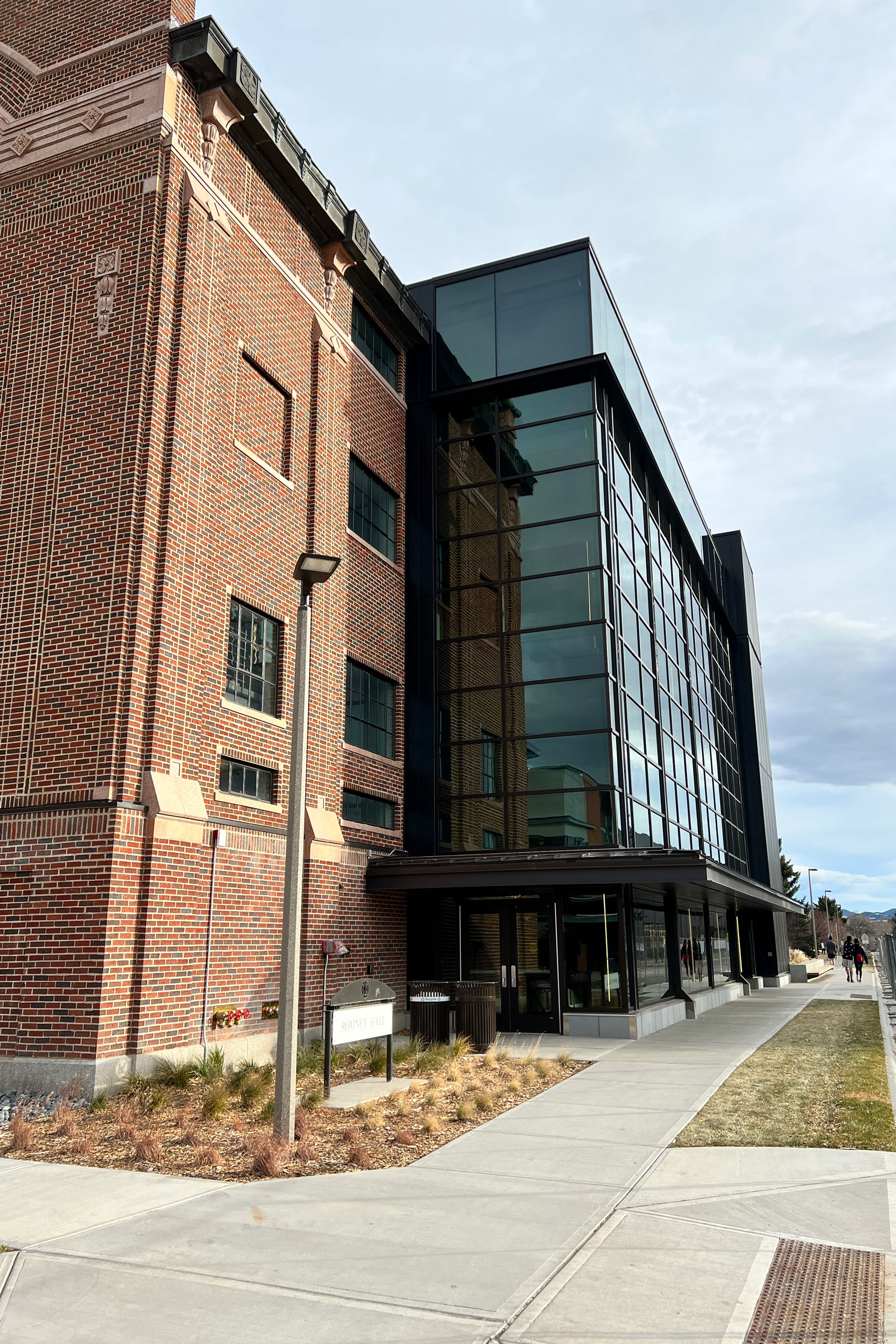
A new stair/elevator core addition on the south side of MSU Romney Hall makes all floors of the building accessible. Photo by Karl Neumann
Most historic preservation projects will require that some modifications be made in order to comply with contemporary accessibility code requirements, as—contrary to popular belief—older buildings are not exempt from the Americans with Disabilities Act (ADA). In accordance with the ADA’s Accessibility Guidelines, historic buildings must meet the following minimum accessibility requirements:
- Provide at least one accessible point of public entry. If no public entry may be made accessible, a non-public unlocked entry may be provided as long as there is directional signage provided at all public entries.
- Possess at least one accessible route from a site access point to an accessible entrance.
- If the building contains toilets, at least one must be located along an accessible route (a unisex privacy bathroom may be used to fulfill this purpose).
- All public spaces at the level of the accessible entry must be located along an accessible route. Access to every level of a historic building is not required, but should be provided wherever practical.
- Any and all displays or other instances of written information must be viewable by a seated person, with horizontal displays having a maximum height of 44 inches.
These minimum requirements are allowed as alternatives only after it has been determined that full compliance with ADA guidelines would destroy or otherwise jeopardize the building’s historic character. Consultation with a State Historic Preservation Officer can help determine the best course of action when it comes to improving the accessibility of historic properties.
Life Safety Code Work
In addition to accessibility accommodations, many historic buildings require modifications to comply with life safety code requirements, a category that includes public health, occupational health, life safety, structural, electrical, and building codes. Older buildings that utilize hazardous building materials like asbestos or lead, for example, will require encapsulation or abatement to ensure that occupants are not exposed to dangerous compounds.
The primary codes dealing with life safety work include the International Existing Building Code, NFPA 101 Life Safety Code, and NFPA 914 Code for Fire Protection of Historic Structures, although many states have their own life safety codes that are more flexible when it comes to historic structures. For this reason it is incredibly important for historic preservationists to coordinate early on in the planning process with local code officials to ensure that all necessary code requirements may be met without negatively affecting the building’s historic character.
3 Examples of Historic Preservation Architecture
Now that we have familiarized ourselves with the fundamental basics of historic preservation architecture and its importance, let’s take a look at a few real-world examples.
1. Desmone Architects’ Main Office, Pittsburgh
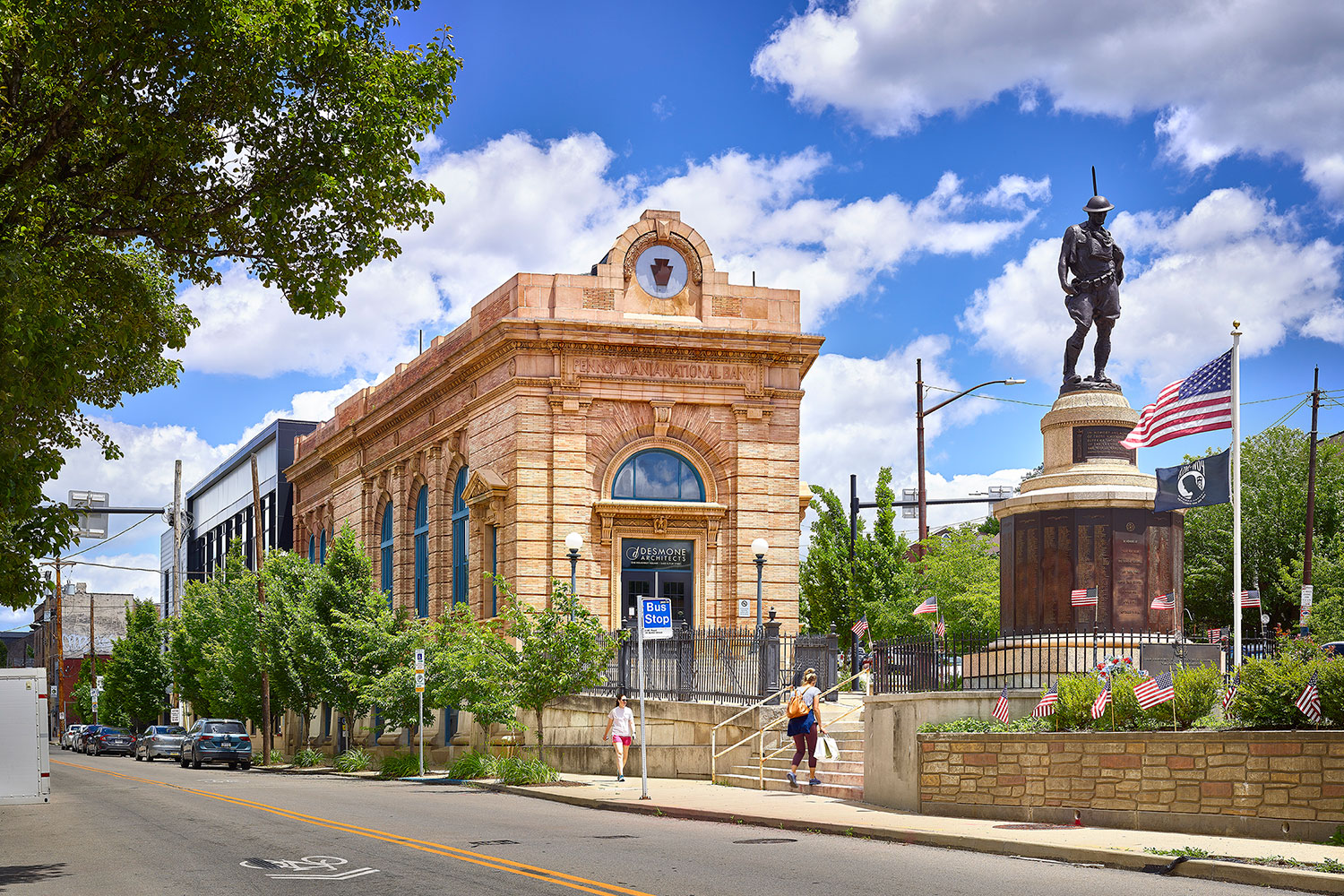
Desmone Architects’ offices are located at Doughboy Square, named after the statue of a World War I soldier. Photo by Ed Massery
Originally built in 1902 and designed by the Beezer Brothers, Desmone Architects’ main office—colloquially known as Two Doughboy Square—resides inside the former Pennsylvania National Bank Building, an 8,200-square-foot, one-story brick and terra-cotta structure constructed in the Beaux-Arts style.
In Pittsburgh’s historic Lawrenceville neighborhood, the bank building had been slated for demolition when, in 1993, Desmone Architects moved into the area looking to expand their operations and saved it from an untimely end. The firm was drawn to the building’s optimal location, historic significance, and impressive facade, citing the grand arched entryway as a major selling point.
Sound construction and skilled design meant that the bank’s exterior required little maintenance or repair and all of the original brick and terra-cotta cladding was left exposed in its weathered state. Indeed, the only major changes to the exterior were the replacement of existing windows with energy-efficient alternatives and the addition of a nameplate above the doorway.
After the firm expanded their main office in 2019—something the Pennsylvania History and Museum Commission worried might detract from the bank’s contribution to Pittsburgh’s historic fabric—Desmone Architects nominated the building for City of Pittsburgh Historic Designation. With the help of Preservation Pittsburgh the bank received official designation on March 13, 2020.
2. Boston Public Library’s Boylston Street Building, Boston
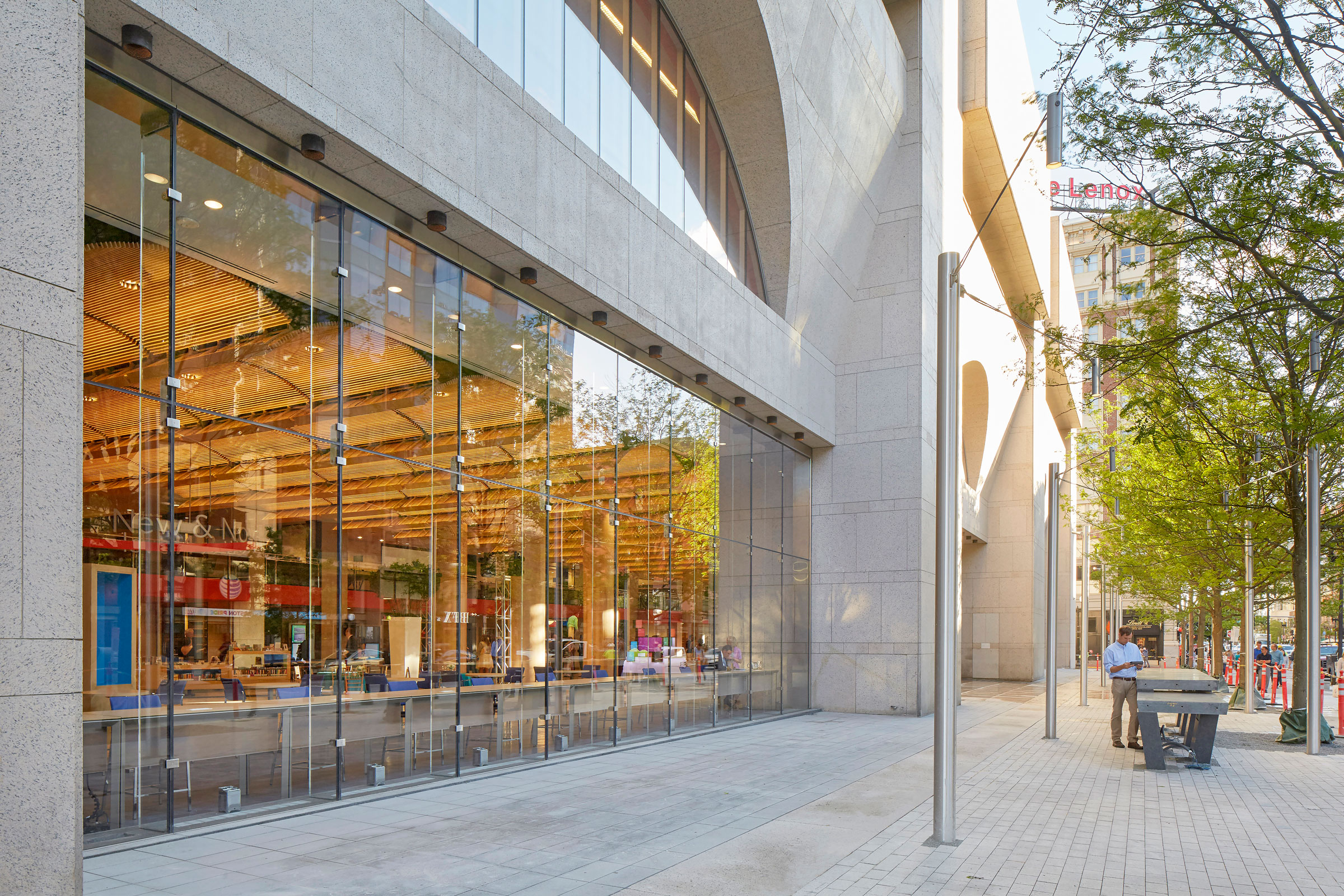
Photo courtesy of William Rawn Associates
Originally designed by architect Philip Johnson and built in 1972, the Boylston Street Building is one of two buildings comprising the Boston Public Library’s (BPL) Central Library in Copley Square, with the other being the original McKim Building, built in 1895. Despite its relative newness, the building is considered historic in its own right—partially due to its connection with the McKim Building—and is recognized as a local landmark.
Between 2013 and 2016, William Rawn Associates (WRA) conducted an extensive renovation of the Boylston Street Building, working closely with the BPL, the Boston Landmark Commission, and the City of Boston to ensure that its defining features were preserved and that all changes conformed with Johnson’s original vision.
“We read everything we could find about Johnson’s work and from that developed a set of Johnson Principles,” Cliff Gayley, a principal architect at WRA, told gb&d in a previous article. “These principles included his ideas like the nine-square grid as well as procession and moment of arrival. We also found specific statements and criticisms Johnson made about his original building that we could address. These principles guided how we thought about transformation as we, the library, and the city worked closely with the Landmarks Commission and their staff to achieve fundamental change, while respecting the legibility and integrity of the original building.”
These principles guided and informed the WRA design team’s decisions, leading to the strategic removal of dividing walls and mezzanine floor plates to create a unified two-story space stretching the length of Boylston Street. A series of 10-foot-tall granite barricades that closed the library’s interior off from the street were also removed to make way for a new entrance and improve public accessibility. In addition to conventional library services, the Boylston Street Building now houses a cafe, broadcasting studio, digital labs, lecture halls, a teen room, and more.
In 2017 the Boston Public Library and a conservation team led by Gianfranco Pocobene would go on to win the Preservation Achievement Award from the Boston Preservation Alliance in recognition of the team’s efforts to preserve and restore artist Pierre Puvis de Chavannes’ Philosophy panel, one of several murals decorating the library’s grand staircase. In the same year, the library received joint awards from the AIA and ALA for its renovation of the Boylston Street Building.
3. Hotel Morgan, Morgantown, WV
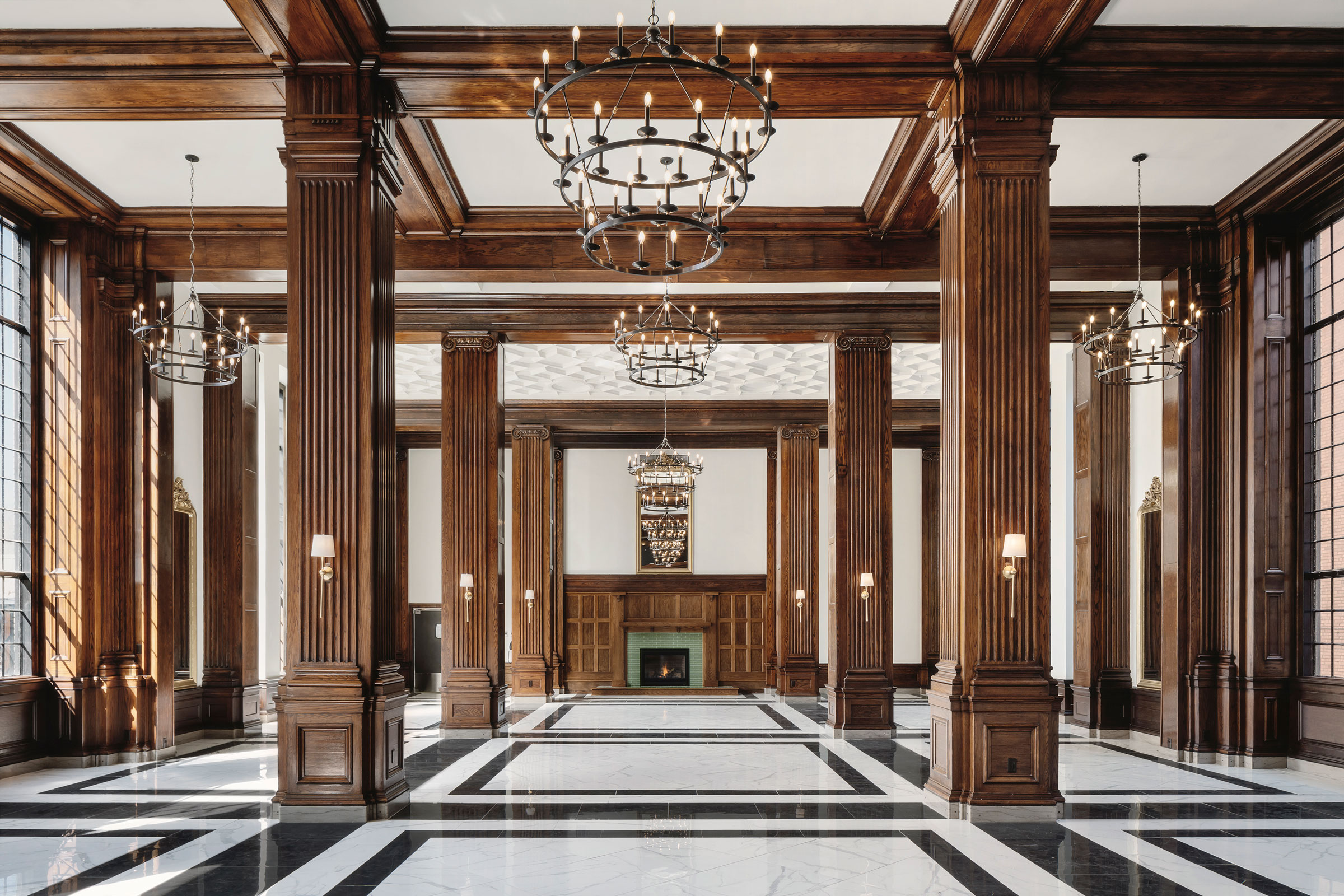
Hotel Morgan’s two-story grand ballroom features soaring windows and a fireplace, all excellently preserved by the Thrash Group. Photo by Chase Daniel
Located in Morgantown, West Virginia, Hotel Morgan originally opened its doors in 1925 and quickly gained renown thanks to its elegant furnishings and classy atmosphere, attracting all manner of socialites and even playing host to President Harry Truman and former first-lady Eleanor Roosevelt.
As the years dragged on, Hotel Morgan’s popularity would start to wane, becoming less and less a destination for academics and politicians and more a spot where the local college football fans would congregate. In an attempt to cater to modern tastes the hotel was renovated in 1999, receiving a new color scheme and updated finishes.
Hotel Morgan was renovated once more in 2020, this time by the Thrash Group and Vertikal Collaborative—but rather than continue with the theme of modernization, the firms sought to return the building to its original splendor, albeit with a slightly contemporary flair. “As the architect, the goal was to restore the timelessness and sophistication that we imagined the original lobby offered guests,” Sarah Newton, an architect with Vertikal Collaborative, previously told gb&d. “A lot of elements had already been replaced, in which case we either kept them if they were still operable and contributed to the restoration efforts or replaced them to what we thought was originally there based on what would have been there at the time the building was originally constructed.”
Any of the hotel’s original components that were still in place—including original wood-framed windows, tall steel windows, tile floors, and wooden trim/finishes—were preserved wherever possible, with modern amenities strategically inserted alongside them. Vintage Victrola radios, retro refrigerators, chaise lounges, and large, luxurious bathrooms can be found in each of the hotel’s guest-rooms and suites, all of which are furnished with custom pieces designed by Thrash Group.

